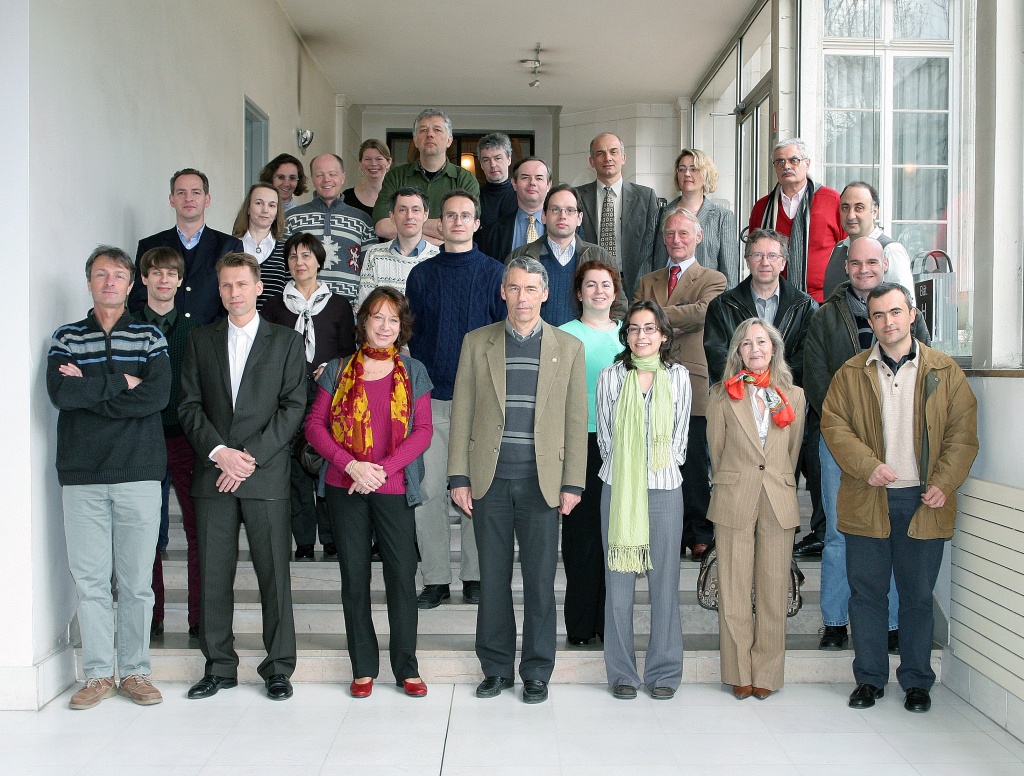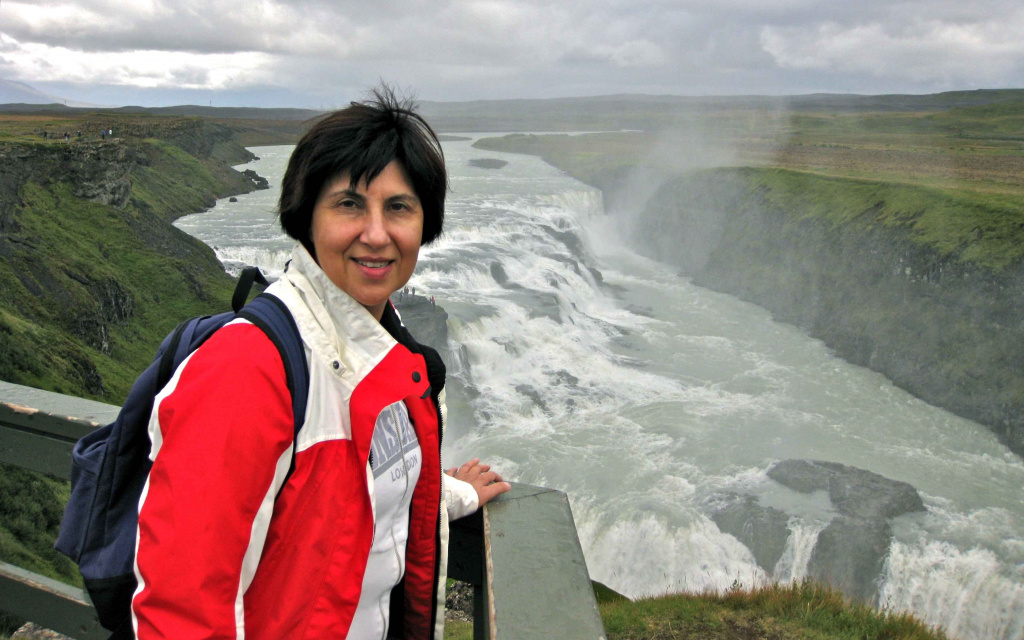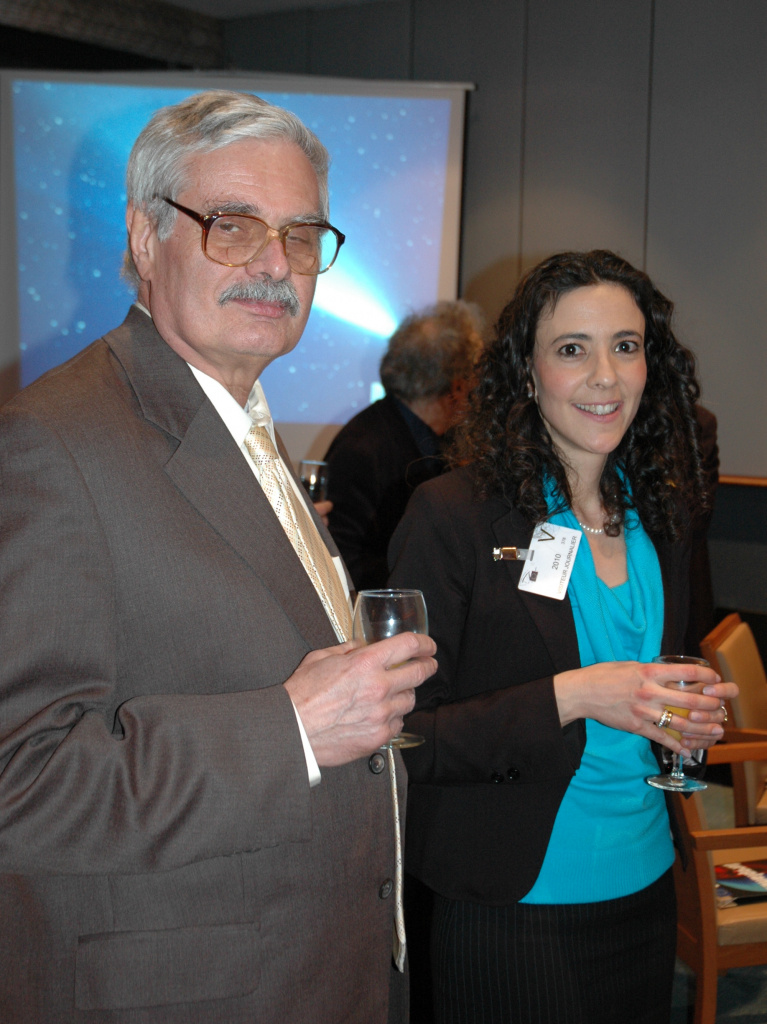In Memorium – Maria Teresa Capria and Károly Szegő
The first few months of 2022 has seen the passing of two of the key founder members of the Europlanet programme. Michel Blanc, Coordinator of Europlanet from 2005-2012, reflects on their contribution and legacy
Read article in the fully formatted PDF of the Europlanet Magazine.
The loss of Maria Teresa Capria is particularly painful for the Europlanet Community. She was part of the founding team of Europlanet from the very beginning and devoted countless efforts to promoting the project. Maria Teresa was convinced of the importance of building a European planetary science community to support the ESA Science programme and the major investments made by ESO and other European institutions for astronomy. She believed deeply in the value of dialogue among scientists and in the importance of free exchange of scientific data of all types, including space data, ground-based observations, laboratory experiments and numerical simulations.
It was with this motivation that she led the development of the Integrated and Distributed Information Service (IDIS) in the original European Planetology Network (EuroPlaNet) project from 2005-2008 and the first Europlanet Research Infrastructure (RI) from 2009-2012. For her, IDIS was the tool that would connect all European scientists across borders, not only between nations, but also between disciplines and techniques. Thanks to her constant support, hard work and commitment, IDIS evolved into the Virtual European Solar and Planetary Access (VESPA) in the Europlanet 2020 and 2024 RI projects (2015-). This wonderful online tool for science collaboration and production of new scientific knowledge owes a lot to her talent and dedication.
I have particularly warm memories of Maria Teresa the Chair of the Local Organising Committee of the European Planetary Science Congress (EPSC) in Rome in 2010, held at the beautiful Angelicum Centrum. Always taking time to give a word of welcome and encouragement to participants, she was a brilliant host to the “Eternal City”, turning a scientific meeting into an unforgettable feast of European planetary science. Her unique smile, touching humour and warm friendship will continue to enlighten our journeys to the planets for a long time to come.

Károly Szegő played a key role from the very first days of Europlanet’s foundation. Károly was one of the European space scientists who worked successively with Soviet, NASA and ESA missions. This is one of the reasons why his contribution in the building and development of Europlanet was so precious.
Károly was a committed supporter of Europe and an strong advocate of science. Europlanet was, for him, a unique opportunity to connect these two passions, while serving the science community. He played a pivotal role as the first leader of the Personnel Exchange Activity in the original European Planetology Network between 2005 and 2008, and in the Networking Activities of the following contracts of the Europlanet RI. As the Inclusiveness Officer of Europlanet, Károly used his deep knowledge of European institutions and member states to engage many planetary scientists from new EU countries into the diverse activities of Europlanet. His personal role in the shaping and expansion with time of our community has been outstanding. Today’s European planetary science community, its international visibility, and its unique role in planetary exploration owe a lot to Károly’s talent and dedication. His memory will always be with us!
Maria Teresa Capria
Maria Teresa Capria passed away on Friday 15 April after a 5-year long illness that she faced with the dignity, determination and tenacity that characterised her as a person and a scientist.
She began her scientific career in the early 1980s as a young graduate in computer science at the Institute of Space Astrophysics, a node in the Italian National Research Council (CNR) computing network that served all research institutes in southern Italy.
This was followed by some years in Oberpfaffenhofen at DLR, the German Aerospace Centre, working with Gerhard Neukum, one of the pioneers of planetary science in Germany. Here, Teresa received her introduction to image analysis, applying state-of- the-art remote sensing software to planetary data. This experience strengthened her collaboration with the IAS Planetology group, working on the small bodies of the Solar System that would later become the core of her scientific activity.
At the beginning of the 1990s, under the guidance of Angioletta Coradini, the IAS Planetology group began to participate in space missions. Teresa offered to take on the responsibility of data archiving, starting with the VIRTIS instrument on board the European Space Agency’s Rosetta probe. Teresa also worked on high-resolution spectroscopy of comets. In the early 2000s she collaborated with Japanese colleagues, who hosted her for a few months at the National Astronomical Observatory of Japan in Tokyo. The experience Teresa gained within the Rosetta mission paved the way for a new collaboration with Padua Observatory, working on the stereo cameras of the SIMBIO-SYS instrument suite on the BepiColombo mission to Mercury.
Teresa’s scientific preparation, perseverance, serenity, clear vision and fair-minded judgments made her a highly valued member of committees and working groups. Among her many roles, she was a member of the INAF Scientific Council from 2016 to 2020, a member of the EU-funded Astrobiology and Planetary Exploration Road Mapping (AstRoMap) team,and was the Italian manager of Europlanet in successive EU-funded projects. She played a leading role in the management structure of Cospar (COmmittee for SPAce Research) as Chair of the Scientific Commission B: Space Studies of the Earth-Moon System, Planets, and Small Bodies of the Solar System. Finally, she was the driving force behind the Italian Society of Planetary Sciences, formed a few months ago, of which she was the President. Teresa was a welcoming and reassuring figure for young researchers, generous with suggestions and advice, always willing to collaborate, never unkind, and passionate about her work. These aspects of her teaching will live on. We will miss her.
Abridged and translated from obituary by INAF.
Károly Szegő
Károly Szegő DSc, Scientific Advisor and Professor Emeritus of the Wigner Research Centre, died unexpectedly on 22 January 2022, at the age of 78.
Károly began his career as a theoretical particle physicist investigating the applications of group theory methods. His interest turned towards space physics in the early 1980s and he made important contributions to understanding the interaction between the solar wind and Solar System bodies, including several planets and comets.
Károly was a co-lead in the VEGA Space Mission (1986), a Soviet-led international effort that was launched to investigate comet Halley up close. Through this mission, the first ever picture of an active cometary nucleus was taken, the size and rotation of the nucleus were determined, and a model of the surface activity of the comet was established. Four of Károly’s scientific publications published in the period 1980-87 are among the seven most cited publications in the field of Solar System research worldwide. His achievements were recognised with the State Prize of Hungary in 1986.
Later, Károly was a guest researcher on NASA’s Pioneer- Venus Orbiter mission and he achieved significant results in the study of Venus. He was a co-investigator participating in the plasma physics experiments of the Phobos-2 mission, launched in 1988 to study Mars and its environment. He was a co-investigator in the plasma physics experiments of the Cassini mission launched by NASA to study Saturn, and he also participated as a co-investigator in the plasma experiments of the ESA Rosetta comet-chaser mission, which performed the first ever soft landing on a cometary nucleus in 2014 and investigated the surface and environment of comet 67P/ Churyumov-Gerasimenko. In recent years he participated in the SERENA plasma experiment of the ESA BepiColombo mission, which has been sent to investigate Mercury.
Károly was the first director of the KFKI Research Institute for Particle and Nuclear Physics of the Hungarian Academy of Sciences (the predecessor of Wigner RCP) from its establishment in 1975 until 2002. Between 2002 and 2012 he organised and supported the work of the Hungarian academic research network as the Head of the Department of Research Institutes of the Hungarian Academy of Sciences. He was an internationally recognised scientist and scientific organiser, and a major presence in the Hungarian space research community, educating and mentoring many students and postdocs, always approachable and always helping colleagues.
Rest in peace, Károly, we will keep your memory alive.
Obituary by Péter Lévai Director General of Wigner Research Centre for Physics published on Wigner website.




